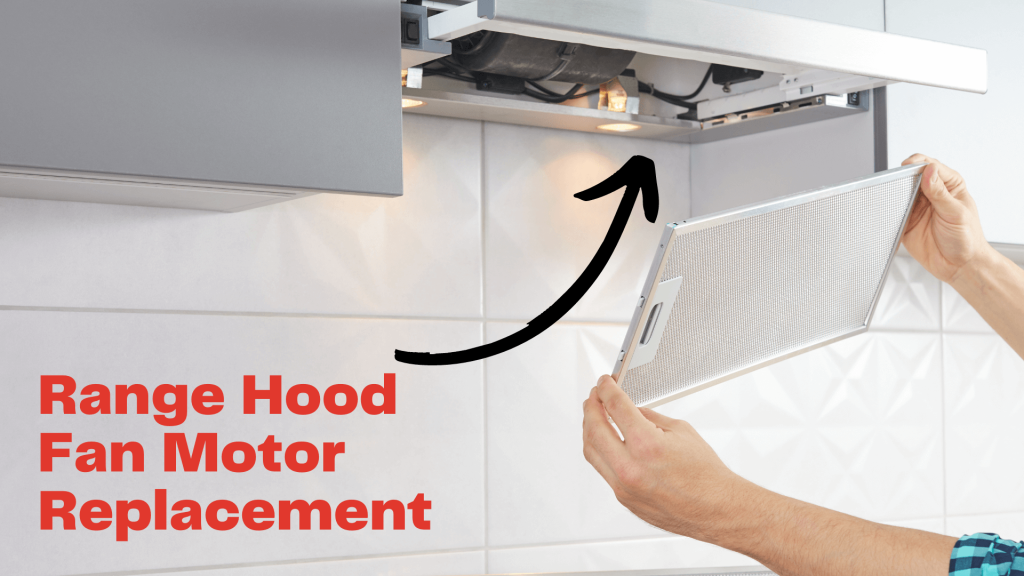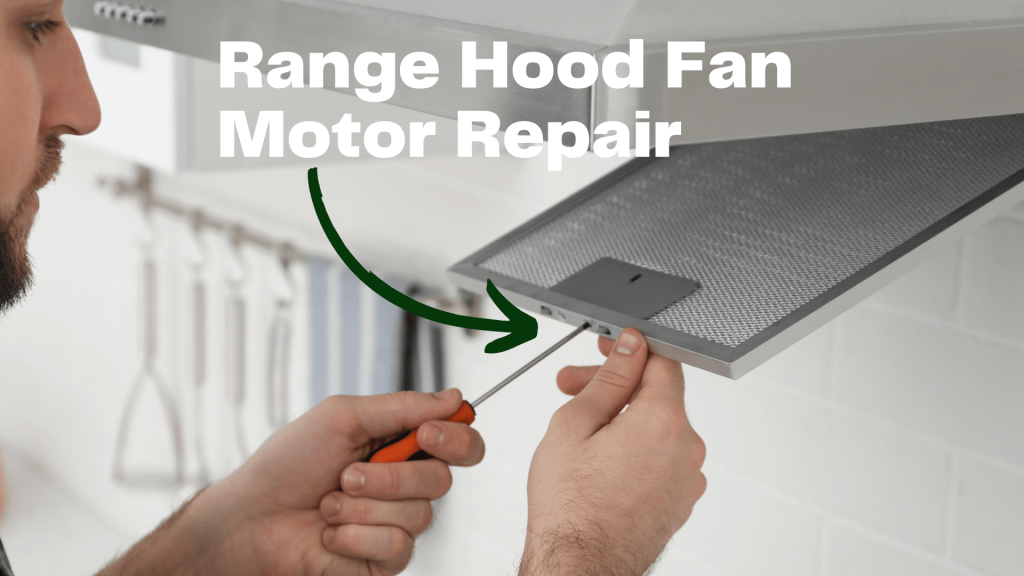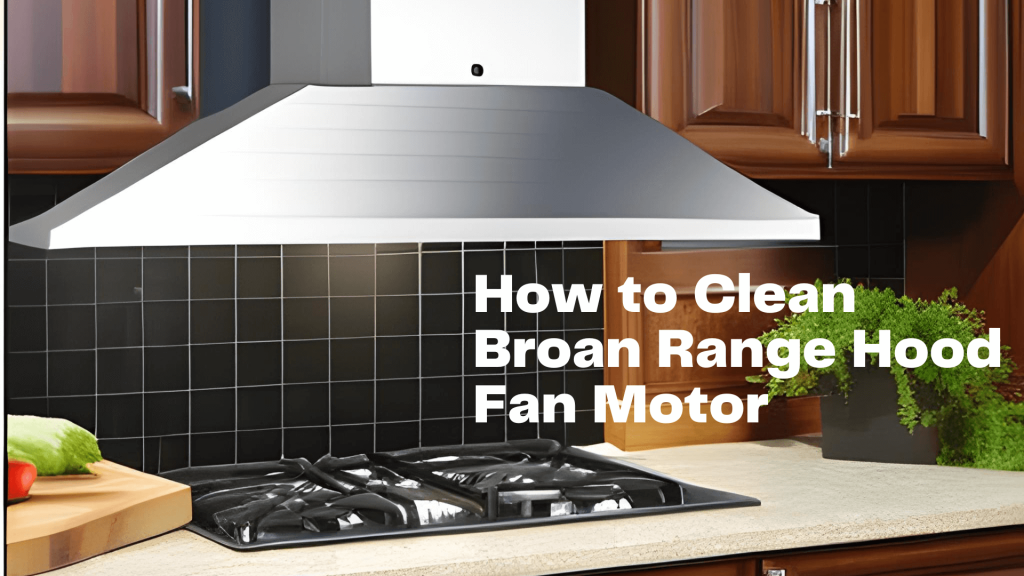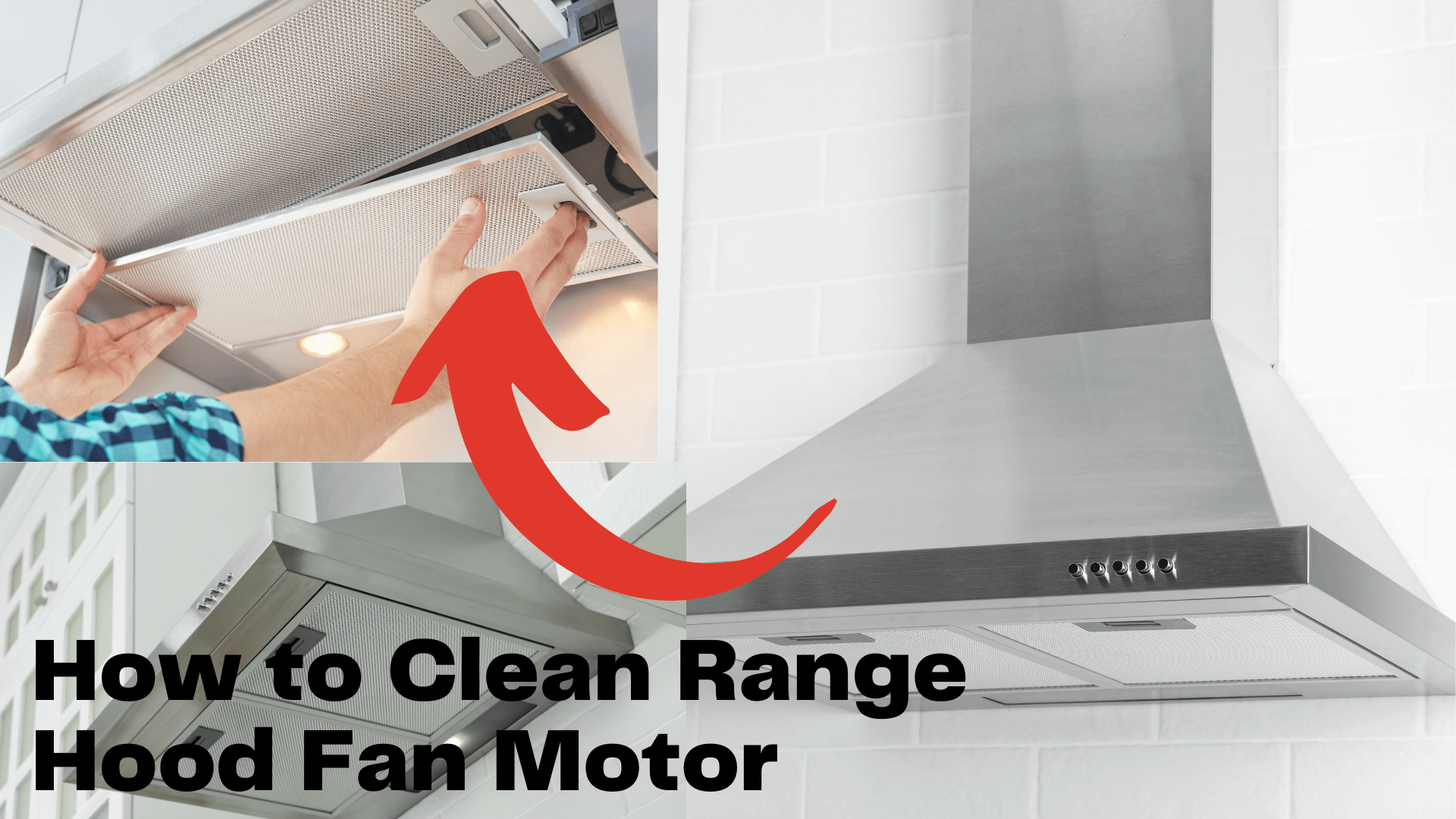Range hood fan motors are crucial in keeping our kitchens free from smoke, odors, and grease. Over time, however, these motors can accumulate dirt and grime, leading to reduced efficiency and potential malfunctions. Regularly cleaning the range hood fan motor ensures optimal performance and a healthier cooking environment. In this article, we will show you how to clean the range hood fan motor.
Importance of Cleaning Range Hood Fan Motor
- The range hood fan motor is responsible for air suction, grease particle capture, and odor venting.
- Dirty motor hampers effectiveness, leading to unpleasant smells and inadequate ventilation.
- Accumulated grease poses a fire hazard if not cleaned regularly.
- Cleaning the range hood fan motor ensures cleanliness, safety, and functionality.
How Many Tools and Materials Needed for Cleaning the Range Hood Fan Motor
- Screwdriver (matching the screws on your range hood)
- Soft-bristled brush or toothbrush
- Dish soap or mild degreaser
- Microfiber cloth or sponge
- A vacuum cleaner with a brush attachment
- Bucket or sink with warm water
- Clean towels or paper towels
Safety Precautions to Take Before Starting to Clean Range Hood Fan Motor
Cleaning a range hood fan motor involves working with electricity and potentially hazardous substances. Therefore, it’s crucial to take proper safety precautions before you begin.
Some important steps are:
- Turning off the circuit breaker
- Put on safety goggles and protective gloves to protect your hands and eyes from cleaning agents and debris.
- Ensure proper ventilation in the kitchen by opening windows or using a fan.
Adhering to these safety measures can minimize the risks of cleaning your range hood fan motor.
5 Lifetime Steps on How to Clean Range Hood Fan Motor
Here are some important lifetime steps to cleaning the range hood fan motor:
1. Disconnecting Power and Removing the Fan Cover
Start by disconnecting the range hood’s power supply to avoid accidents. Find and turn off the breakers for the range hood. Unplug your range hood from the electrical outlet if connected through a plug. This step ensures your safety while working on the fan motor.
Next, remove the fan cover to gain access to the motor. Use a screwdriver that matches the screws holding the cover in place. Carefully unscrew the cover and set it aside. Take note of the screws’ location for easy reassembly later.
2. Cleaning the Fan Blades and Motor Assembly
- Clean the fan blades and motor assembly by removing the fan cover.
- Use a soft-bristled brush or toothbrush to gently remove loose dirt, dust, and grease from the fan blades.
- Pay attention to the nooks and crevices where buildup is likely.
- Dampen the brush with dish soap or a mild degreaser mixed with water to help loosen stubborn stains or grease.
- To clean the blades and motor assembly, use a vacuum cleaner with a brush attachment.
- Move the brush attachment around each blade to reach all areas.
- Be cautious to avoid damaging the blades or motor components.
3. Removing and Cleaning the Filters of Range Hood Fan Motor
To thoroughly clean the range hood fan motor:
- Remove and clean the filters. Refer to the range hood’s user manual for the filter type and removal method.
- Most filters can be unlatched or slid out easily.
- Inspect the filters for dirt, grease, and debris.
- Submerge the filters in warm water with dish soap or a mild degreaser and let them soak for a few minutes.
- Use a soft brush or sponge to scrub the buildup on both sides of the filters.
- Rinse the filters thoroughly with clean water to remove soap or degreaser residue.
- Let the filters to air dry fully before replacing them.
4. Cleaning the Fan Housing
- Allow the filters to air dry and seize the opportunity to cleanse the fan housing.
- Utilize a mild cleaning solution on a microfiber cloth or sponge to delicately wipe the inner surfaces of the range hood.
- Pay extra attention to regions around the fan motor prone to grease buildup.
- For stubborn stains or grease, create a paste using baking soda and water.
- Apply the paste to affected areas, let it sit, and then clean with a soft brush or cloth.
- Thoroughly rinse and dry the area with clean water after cleaning.
5. Reassembling the Range Hood Fan
After cleaning and drying, reassemble the range hood fan.
Start by placing the filters back in their original positions. Ensure they fit securely and latch or slide into place according to your range hood’s instructions.
Next, align the fan cover with the screw holes and screw it back into place using the screwdriver. Ensure all screws are tightened, but avoid overtightening, as it may damage the cover or housing.
Finally, restore the power supply to the range hood by switching on the circuit breaker or plugging it back into the electrical outlet. Test the fan motor to confirm that it’s working correctly.
Related Topic: How to Clean Range Hood Baffle Filters
6 Range Hood Fan Motor Maintenance Tips
To keep your range hood fan motor clean and functioning optimally, here are some additional tips:
- Clean the fan motor at least once every three months, or more frequently if you cook regularly with greasy foods.
- Wipe down the exterior surfaces of the range hood regularly to prevent grease buildup.
- Use a splatter screen or cover pots
- Avoid harsh chemicals or abrasive cleaners on the fan motor or other components, as they can cause damage.
- Consider installing a grease trap or filter in the range hood to capture grease before it reaches the fan motor.
- Regularly check and clean the vent ducts connected to the range hood to ensure proper airflow.
How to Test Range Hood Fan Motor
To test a range hood fan motor, you can follow these steps:
- Ensure proper connection of the range hood to a power source.
- Activate the range hood, setting it to the highest fan speed.
- Observe the smooth operation of the fan motor without unusual sounds or vibrations.
- Check for proper spinning of fan blades, ensuring adequate airflow.
- Assess suction strength by using hand or paper near the vent/exhaust area.
- If the fan motor doesn’t start, inspect the power supply and connection.
- Unusual noises or vibrations may signal a fan motor issue, requiring further examination.
- If the fan operates smoothly with ample airflow and suction, the motor is functioning correctly.
What Cleaning Difference Between Ventline Range Hood Fan Motor and Ge Range Hood Fan Motor
The cleaning process for the Ventline range hood fan motor and the GE range hood fan motor is generally similar. But, some variations depending on the design and model of each range hood.
Both fan motors can be cleaned using a soft-bristled brush or toothbrush to remove loose dirt, dust, and grease. Stubborn stains or grease can be tackled by dampening the brush with a mild degreaser or mixing dish soap and water.
Refer to the user manuals for Ventline and GE range hoods for brand-specific cleaning instructions, as recommended cleaning agents and techniques may differ slightly.
9 Steps Range Hood Fan Motor Replacement

To replace a range hood fan motor, follow these lifetime steps:
- Disconnect the electrical connections leading to the fan motor. This may involve removing wire connectors or unscrewing terminal screws.
- Carefully remove the fan motor assembly from the range hood, ensuring no damage to any surrounding components.
- Remove the fan blades from the old motor by unscrewing them or using a retaining clip.
- Install the new fan motor assembly. Secure it in place using the appropriate mounting method.
- If the fan blades were removed, attach them securely to the new motor according to the manufacturer’s instructions.
- Reconnect the electrical connections, ensuring proper alignment and tightness.
- Reattach any covers or housing removed during the replacement process.
- Plug in the range hood and turn it on to test the new fan motor’s functionality.
- Confirm that the fan motor is running smoothly and generating sufficient airflow. YAHOOOOO!
Note:
These steps are ventline, Ge and Range hood fan motor guidelines, and the specific process may vary depending on the brand, model, and design of your range hood.
How do Range Hood Fan Motor Repair

To repair a range hood fan motor, follow these expert steps:
- Unplug the range hood.
- Inspect the fan motor for damage or issues.
- Tighten loose connections and screws.
- Check for obstructions or blockages.
- Replace damaged components if necessary.
- Seek professional assistance if the motor still doesn’t work properly.
- Reassemble the range hood.
- Plug in and test the repaired fan motor.
- Confirm the smooth operation and sufficient airflow.
How Often Do You Need to Clean a Hood Fan?
- Hood fan cleaning frequency varies based on factors like cooking frequency, methods, and kitchen conditions.
- Recommended cleaning interval: every 3 to 6 months, but adjust based on specific needs.
- If excessive grease, unpleasant odors, or reduced ventilation effectiveness are observed, increase cleaning frequency.
- Routine inspection and cleaning are crucial for maintaining optimal performance and preventing fire hazards.
How to Clean Broan Range Hood Fan Motor

- Turn off and unplug the range hood.
- Remove any covers obstructing access to the fan motor.
- Use a brush or vacuum to remove loose debris.
- Be cautious not to damage the fan blades or motor.
- Wipe down the motor assembly with a damp cloth.
- Allow the motor to dry completely.
- Reattach covers and plug in the range hood.
- Test the fan motor for proper functionality.
Recommended Topics:
FAQs About How to Clean Range Hood Fan Motor
Do range hoods need to be cleaned?
Yes, range hoods do need to be cleaned regularly. If not cleaned regularly, a range hood can become less effective in capturing and venting pollutants, leading to unpleasant odors, poor ventilation, and potential fire hazards. Therefore, cleaning range hoods to ensure their cleanliness, safety, and optimal functionality is important.
Can I use water to clean the fan motor?
It is best to avoid direct contact of water with the fan motor to prevent electrical damage. Instead, use a soft brush or cloth dampened with a mild cleaning solution to clean the motor housing and other accessible parts.
What should I do if the fan motor is not working after cleaning?
If the fan motor does not work after cleaning, ensure that the power supply is properly restored. If the issue persists, it is recommended to consult a professional technician to diagnose and repair any underlying problems.
Can I clean the range hood filters in the dishwasher?
Not all range hood filters are dishwasher-safe. Refer to the manufacturer’s instructions to determine if your filters can be safely cleaned in the dishwasher. If not, follow the manual’s guidelines for hand washing.
Is it necessary to hire a professional for cleaning the range hood fan motor?
Cleaning the range hood fan motor can be done as a DIY task. However, if you are unsure or uncomfortable working with electrical components, it is advisable to seek professional assistance to ensure safety and proper cleaning.
how to fix fan motor for range hood?
To fix a fan motor for a range hood, start by turning off the power and accessing the motor assembly. Check for loose connections or damaged components. Tighten any loose connections and replace any faulty parts. Test the motor to ensure it’s functioning properly before reassembling the range hood.
where is the model number found on a range hood fan motor?
The model number of a range hood fan motor is typically located on a label or plate attached to the motor itself. Check the sides, top, back, or underside of the motor housing for the model number.
how do you oil the motor in a range hood fan?
Most range hood fan motors do not require oiling as they are sealed. However, if your motor has oil ports, use lightweight household oil and place a few drops into each port.
how a two speed range hood fan motor works
A two-speed range hood fan motor operates using two different speed settings. It typically has two sets of windings or coils that control the speed variations. The motor’s speed is determined by the electrical connections made to these windings.
By switching between the different windings, the motor can operate at either a lower or higher speed. This allows the range hood to adjust the airflow and ventilation intensity according to the user’s preference. The control for selecting the desired speed setting is usually located on the range hood itself, allowing users to switch between the two speeds as needed.





